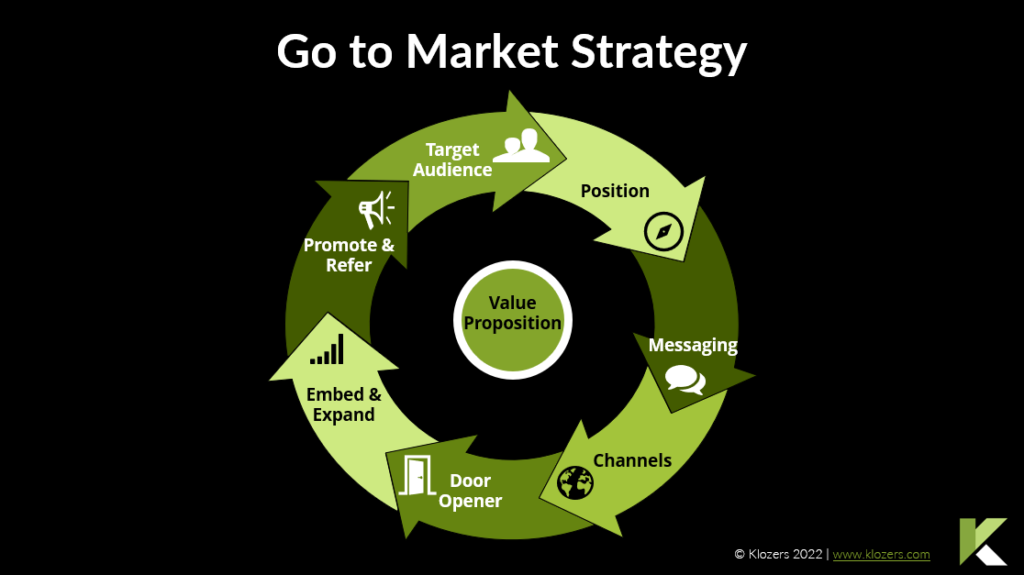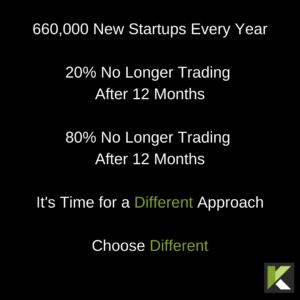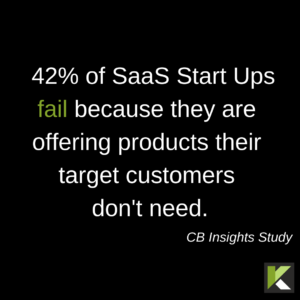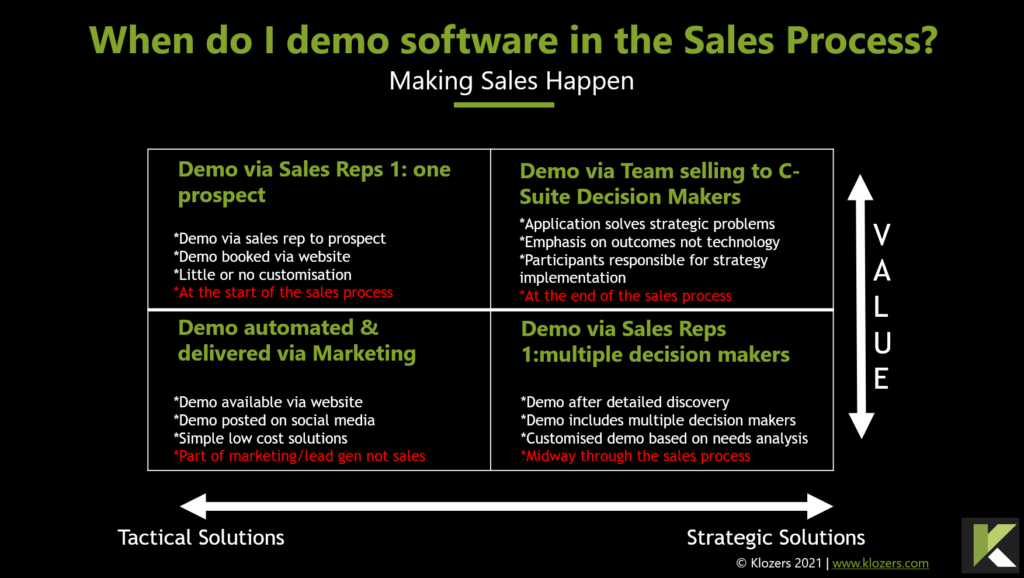There’s a new way to deliver sales growth…
Don’t buy Sales Training until you’ve watched this video…

A go-to-market strategy (GTM) is a detailed plan made to successfully introduce a product or service to the market. A strong GTM strategy involves target audience identification, a marketing plan, and a sales strategy. GTM strategies should identify a market issue or business pain and present the product as a potential solution.
A GTM strategy is, to put it simply, how a business chooses to sell a product to the market. It is a practical roadmap that assesses a solution’s likelihood of success and forecasts its performance using market research, precedents, and competitor data.
It’s also important to remember that go-to-market strategies aren’t limited to tangible goods. For a new service, a new division of your firm, or even a brand-new venture, you can develop GTM strategies. Lastly, you can develop a GTM strategy to relaunch or reinvigorate an existing product or service.
Don’t buy Sales Training until you’ve watched this video…
The path to success is littered with failure and whilst failure can be a great teacher, it comes at a cost. The best ideas, whether they be SaaS or a traditional business model, can easily fail without a GTM strategy that can deliver growth and profits.
Without good planning, it’s impossible to tell if you’re pursuing the correct audience, entering a market too early or late, or aiming for one that’s oversaturated with comparable products. You don’t want to waste time and money on developing a product that won’t be successful.
You need to create a well-thought-out, doable, and efficient go-to-market strategy if you want to prevent those potentially disastrous hiccups and hangups. Most of the time, navigating that process is anything but simple.
This information will walk you through all you need to know to develop an effective and successful GTM strategy. This framework applies to B2B companies, startups, and essentially any new business or product you intend to sell, either to existing customers or new customers.
With 660,000 new startups every year, 20% of which are no longer trading after 12 months and 80% not trading after 60 months, the odds of success are against you. Even if you invest a lot of work, time, money, and resources into producing a new product or service, your project could fail if your go-to-market strategy is poorly thought out.
It’s critical to begin developing a go-to-market strategy as you create something new, one that is tailored to meet the product, your budget and buyer persona.
The majority of errors and oversights that might ruin the launch of a new product can be avoided by developing simply planning a go-to-market strategy prior to launch. Even if the product is well-designed and unique, a launch might be hampered by things like poor product-market fit or perceived oversaturation in the market.
A go-to-market strategy can help you manage expectations and iron out any wrinkles before you invest in bringing a product to market, although it can never guarantee success.
Lastly, your GTM strategy is an important tool for providing a centre point and focus, for your sales and marketing teams.

A go-to-market plan is specifically designed for introducing a new product or entering a new market. A marketing plan, on the other hand, normally provides specifics on how your entire business marketing strategy will be carried out.
A marketing plan, like an annual roadmap or an all-encompassing digital marketing strategy, is a long-term strategy to help you reach your marketing objectives rather than being launch-specific.
Your GTM approach is adapted to a particular launch, but it is based on your long-term marketing strategy.

The essential components of a go-to-market strategy are as follows:
Your value proposition is the starting point on the journey that is product/market fit. In the simplest terms your value proposition defines how your product will address your target customers’ needs better than any alternatives.
Who is affected by the issue or pains your product addresses? How much are they prepared to spend on a fix? Can you target your existing customer base in addition to new? How big is the Total Available Market (TAM)? What is their buying process. Are we targeting SMEs, Mid-Market or Enterprise?
Who is the current provider and what makes you different. Who is already providing what you are launching? What is the status Quo? Does a market exist for the product/service, or is it already saturated? What position will help us achieve competitive advantage in the market?
5. Channels: How will the product or service be distributed? A website, an app, or a distributor from a third party? Have we costed each channel?
6. Door opener:
What is our irrefusable first offer that will capture new clients? How do we get that offer in front of our Ideal Client Profile?
7. embed & expand:
In SaaS the onboarding of new customers represents the biggest challenge with 25% of users abandoning apps after the first use. How do we onboard and delight new customers and then spread throughout the organisation?
8. Promote & Refer:
Starting with the end in mind, how do we create brand ambassadors who in turn create a recurring stream of client referrals
The best products will fail even with many customers if sales can’t be processed and service levels can’t be maintained. The best products will fail even with many customers delivered by the go-to-market strategy (step forward the revenue delivery strategy and pricing strategy).
The midpoint of this journey does not, however, fit every go-to-market strategy perfectly. Depending on what will be your growth engine, your go-to-market strategy will be different.
There are two options: growth that is driven by products and growth that is driven by sales.
The focus of growth is placed on the product using a product-led go-to-market strategy. The product functions as both a remedy for a company issue and a silent salesperson by enabling clients to purchase, renew, and upgrade without ever leaving the product.
The absence of a salesperson during the discovery and research stages of the sales journey is also crucial to the concept of this self-serve sales model. Theoretically, the product should contain all the information a potential buyer may need, from the features and technical specifications of the solution to the pricing alternatives and contract conditions.
A freemium offer is one of many approaches used in product-led go-to-market strategies to first attract consumers before later converting them to paying clients. The line between product strategy and go-to-market strategy becomes hazier in product-led go-to-market strategies since the product serves as the primary sales channel.
The customer journey is influenced by factors including site architecture, product design, user experience (UX), and copy, which makes these factors more crucial to the go-to-market strategist.
A salesman initiates and closes sales in a sales-led go-to-market approach. Even while the product will play a significant role in any sales conversation, the actual transaction (as well as any subsequent renewals and upgrades) happen off the platform.
This strategy is frequently used when a product is so ground-breaking, intricate, or expensive that numerous parties must participate in the decision-making process over several months (Enterprise Sales). Due to the resource-intensive nature of the sales process, the company will concentrate on making fewer sales at greater margins.
Sales-led go-to-market strategies are driven by people rather than the product, which makes the continuing connection to product marketing weaker. Instead, product marketing and go-to-market strategies will collaborate closely to establish the advantages of the solution and the target market at the outset of a sales-led growth plan.
Equally, product and revenue delivery strategies are more disjointed in a sales-led go-to-market strategy, where the product is not the means of processing orders.

The funnel and the flywheel are the two main approaches for establishing a go-to-market strategy. The flywheel technique employs inbound marketing and other strategies to create long-lasting client relationships, in contrast to the conventional, one-off funnel method, which focuses on attracting leads and nurturing them into sales.
The circular flywheel concentrates on luring, enticing, and pleasing prospects, leads, and customers, whereas the funnel is focused on the awareness, deliberation, and decision stages of the customer’s journey. When a lead turns to a customer, the flywheel continues as the business must keep drawing them in, keep them interested, and satisfy them with top-notch customer service, fresh content, and possibly new products.
You should follow these phases in your planning approach whether you’ve chosen to use the flywheel or the funnel.
As obvious as it seems, it is a key point, the first step in putting your product on the market is to think about your customer.
A complicated B2B solution often has a buying group of six to ten decision-makers. The “purchasing centre” is set up with these people.
Although it’s vital to keep in mind that some job titles may serve more than one role, each of those buyers normally fulfils one of the following roles:
Users are those who consistently use your product, influencers are those who persuade others to buy it, decision-makers are those who approve final purchases, and buyers are those who control the budget.
Depending on the product, sector, and vertical you’re selling to, these positions change. Gather your team and discuss the various job roles that your solution might affect.
After mapping the personas for your buying centre, it is the best time to map out your value matrix.
Each buying centre persona, their business issues, and how useful your solution is in resolving those issues are broken down into a value matrix.
A relevant marketing message connecting the problem and solution must also be included in the value matrix.
Create a chart with one column for each persona. List the daily pain points that each persona experiences below. Include them in a row if your product can alleviate or resolve any of these issues.
In the end, the message must effectively convey both the value and the pain point. Agitating the pain point is the most effective technique to accomplish this. While most people will take a pain reliever to treat a headache, they are considerably less likely to take a daily vitamin to avoid the pain altogether. Your product’s value should be in relieving the suffering, not in acting as a vitamin.
After establishing your value matrix, it’s time to test your messaging. Utilizing the messages you’ve just generated for various audience members, begin promoting on social media networks.
You will have to test variables to find out what works in your marketing campaigns. The three variables you will test are the channel on which you advertise, the audience you aim for, and the message you convey.
Think about where your audience is before determining where to test. Google Ads, Facebook, LinkedIn and Twitter are potential paid digital advertising channels. Test different channels, then keep advertising on the ones that convert well. And stop spending money on channels that convert poorly.
Optimize for your target customers next. Some ad networks offer advertisers settings for highly focused audiences. For instance, LinkedIn provides options for firm size, region, job title and function. To determine which audience is more likely to click or convert, test several possibilities.
Spending money where you’ll get the most return on investment is the key in this situation.
Additionally, you’ll test your messaging to determine which versions are most effective with your audience. Your advertising’ engagement and conversion rates will show you which value propositions and pain points are the most effective.
After gathering this data, you can use the successful insights to guide your larger campaigns.
After developing your personas and value matrix, go further to comprehend the path a potential client would travel, both from the buyer’s and your company’s perspectives.
From your customer’s viewpoint, the buying process is straightforward. It will essentially go as follows:
From a business standpoint, the buyer’s journey used to resemble a funnel. The top of the traditional sales funnel has a high level of general interest. As opportunities come off the pipeline, it gradually gets smaller.
The sales funnel is no longer the ideal lens through which to see your buyer’s journey. Instead, we advise employing the flywheel model, which adopts a more comprehensive strategy and centres on your client, converting leads into customers and active promoters.
Customers go through three stages in the flywheel model: attract, engage, and delight.
The period of attraction comes first. This stage of content draws a potential customer in. This might be a blog post, whitepaper, or video. A lead gets here by clicking on an advertisement, social media post, or search engine result.
These actions, however, do not suggest that the lead is prepared to make a purchase just yet.
The engaging step then follows. At this point, a potential customer has shown that they have an issue that your solution can address. This allows you to engage them with educational content through digital behaviours like downloading an ebook or signing up for a webinar.
Marketing normally oversees the entice and engage phases of the lead generation and qualification process, while each firm has its unique divisions. Through messaging and content, your marketing staff must pique the attention of the target audience, raise awareness of the product, and inform them of its benefits.
The prospect should request a price estimate or a trial period at the halfway point of the engagement process. They’re about to choose whether or not to buy.
When the potential customer reaches this stage, the sales group takes over. For large deals, the procedure will typically look like this:
The lead leaves the engage phase and enters the delight phase as soon as your sales agent closes the deal. When a client reaches this point, you should please them with a simple onboarding procedure and welcoming customer care alternatives.
Then, hopefully, your customer will become a promoter. They increase your consumer base, which keeps the flywheel turning and helps you expand more effectively.
You’ve completed all the necessary groundwork; the next step is to choose a plan of action to introduce your product to the market. It’s critical to take into account your method’s complexity, scalability, and cost because no single approach will be effective for every product or market.
Typically, there are four go-to-market sales strategies, each of which is tailored to a particular product and company model.
When a customer makes an independent purchase, it is considered self-service. This business-to-consumer strategy is frequently used when a customer may discover and purchase a product online via a website like Netflix or Amazon.
Simple products with a low price point and big sales volumes are the greatest candidates for this. It’s challenging to construct, but when it does, it has a quick sales cycle, requires no upfront investment to hire salespeople, and is very profitable.
You won’t need a sales crew, but you will need a marketing team to promote your website and increase conversions. This gives you a competitive advantage. Experts in pricing strategy, growth marketing, performance marketing, and content marketing would likely make up the core marketing team, however, there may also be other team members.
The inside sales business model is used when a sales representative must develop a prospect before a contract can be closed. With a product of moderate complexity and cost, this kind of model performs best.
The sales cycle length varies from a few weeks to a few months. In this case, you’ll invest in sales and support teams, but inside sales representatives are less expensive than field representatives.
This business is fairly simple to develop and grow as you add additional team members, and it has the potential to be successful with huge sales volumes. In this arrangement, the sales team is often made up of a sales manager and a small number of representatives.
When you have a whole sales organization that closes big business agreements, that is the field sales, business model. These are frequently complicated products with high price tags, which also means that there are frequently few offers and a lengthy sales cycle.
Due to the high salaries and experience of the field salespeople, the sales team in this model is frequently quite expensive. Because it costs time and money to recruit and train a whole sales staff, this model is simple to create but more challenging to scale.
A sales manager, field representatives, sales engineers, a team of sales development representatives (SDR), and sales operations are among the group’s members.
Finally, in the channel model, a third-party partner or agency sells your goods on your behalf. Building this is challenging since it can be challenging to find and educate potential employees about the advantages of your product. They frequently have lower sales motivation than your own sales team would.
However, because you don’t have to pay for your own sales team, this strategy is inexpensive. It functions best when the product aligns with the partner’s interests.
Depending on your industry or target market, you can combine or contrast these approaches. Instead of investing in an expensive sales team too soon, businesses should scale over time.
Now you must attract the interest of your target market to fill your pipeline. Demand generation, which may be accomplished through both inbound and outbound tactics, is how this happens.
With inbound, customers find your brand through marketing initiatives and contact you or express interest in you of their own will.
Social media, content, or paid advertisements that lead to a landing page are a few examples of channels that generate organic inbound traffic.
When a salesperson makes a cold outreach contact with a lead, this is known as outbound demand generation. They could accomplish this by calling leads, sending warm emails, reaching out to contacts on a contact list, or gathering leads at trade shows.
The leads are guided to additional instructional information and eventually into the sales funnel once interest has been developed through these tactics.
In general, inbound leads are less expensive to acquire and easier to convert than outbound leads. This is because inbound prospects are already aware of your product, partially educated on the business problem you answer, and typically more interested in purchasing it.
The secret to creating that inbound interest is content marketing, which will bring visitors to your website.
By identifying and targeting keywords that your potential customers might use to search for your products or services, your content marketing team will increase the amount of inbound traffic to your website.
Search engine optimization (SEO), which is how a search engine ranks the information on the internet after a query is entered into the search bar, is at the heart of content marketing. This will contribute significantly to your organic website traffic.
Although various products might require various launch strategies, the template and instructions below should help you develop a sound initial plan that can be modified as you go.
Choose keywords that are relevant to your product, determine their volume (how frequently people search for them), the difficulty of ranking for them (i.e., how competitive they are), and find out who is already ranking for them.
Come up with content ideas that contain that term. Look for existing articles on these subjects to help you plan your content calendar.
Put those concepts into action and commission seo optimised articles on those subjects from writers in order to drive traffic to your website.
Make your information more visually appealing and engaging by including pertinent photos, infographics, videos, and other multimedia.
Share the links to your material on social media or in emails to your client database to increase traffic to your website.
Make contact with other publishers and request that they link to your work to increase traffic. You get site authority as a result, which raises your SEO ranks.
Monitor and gauge your content’s engagement and conversion rates. Drop what doesn’t work and continue with what does. Restart the cycle of content generation after that.
Selecting a sales strategy and developing a demand-creation process are not sufficient for growth.
Sales is a numbers game, and you can only improve by tracking your success. Volume, conversion rate, and time are the key performance indicators (KPIs) for managing a sales staff.
You should keep tabs on the volume of your pipeline, which measures how many opportunities enter the flywheel.
then keep tabs on how many leads ended up becoming clients. You can determine your overall conversion rate by comparing the volume of opportunities in your pipeline to the number of closed agreements.
Finally, keep tabs on the length of your sales cycle. This is how long it takes for an opportunity to get from the top of the sales funnel to a closed or successful deal. The conversion between each stage should be sped up. This can be achieved by recognizing typical objections (and iterating ways to eliminate them before they arise), doing continual lead nurturing, and coming up with ideas for how to locate the most suitable clients.
You’ll also need to reduce the expense of acquiring new customers as a business owner. At first, this will be incredibly expensive, but as time goes on, you’ll need to optimize your procedures to lower this cost or you’ll end up losing more money than you gain.
The cost of acquiring a new customer or contract is expressed as a cost per $1. The less your marketing activities affect your PNL, the more profit you make per customer, and the lower the cost of customer acquisition.
A well-known proverb in the sector states that acquiring new customers is seven times more expensive than doing business with current ones. This is because if you’re offering a fantastic shopping experience, your current consumers already know, like, and trust you.
Renewals, cross-selling, and upselling are the best ways for businesses to increase revenue and profits.
Many people view sales as a mysterious black box. However, business executives may enhance their processes to increase productivity thanks to analytics and emerging sales AI solutions.
Entrepreneurs who possess specific abilities are not the only ones who can build a successful business.
You’ve probably already built your product, and creating a corporation is a fairly similar process. Throughout the process, you must remain strategic and work to improve.
You can create a firm if you take your time and keep improving. Revisit the parts of your plan that need adjustment. Keep track of what is working and come up with ideas for how to build on it.
You’ll concentrate on keeping up your client relationships and generating positive word-of-mouth during this time. A flywheel method can be considerably more beneficial in this situation than a funnel that finishes with sales.

When properly implemented, the go-to-market strategy will bring all stakeholders together and develop a roadmap to make sure each one accomplishes the objectives and milestones set forth, paving the way for market success.
In general, a go-to-market strategy is employed to produce the following advantages within a company:
Go-to-market plans can refer to the precise measures a business must take to direct client interactions for established products, even though they are frequently linked with product launches.
Organizations need a thorough grasp of the target market and the working environment to develop a GTM strategy that works. The management system for the GTM strategy should be built, and both new and existing procedures should be documented.
It’s essential to develop a comprehensive and effective GTM strategy as part of your overall marketing strategy before launching a new product or service.
A go-to-market plan is an action plan for your business that outlines how the entire team will do market research, introduce products, and evaluate their success. Our suggestion would be to take the key points from your go-to-market strategy, present them to your executive team for approval, then establish deadlines and concentrate on execution.
By following the instructions in this tutorial, you’ll be well on your way to launching a new product that will benefit your potential clients and make money on the market.
“A fantastic learning experience”
Amanda – Account Manager

Iain Swanston has spent over 30 years in B2B sales selling, training and leading teams both domestically and internationally. In addition he serves as an Associate at Strathclyde University Business School where he has delivered the sales content for the Masters in Entrepreneurship since 2015.
124 City Road,
London,
EC1V 2NX.
8911 North Capital of Texas Highway, Suite 4200 #1154
Austin, TX 78759
United States
Klozers
Ground Floor
470 St Kilda Road
Melbourne VIC
3004